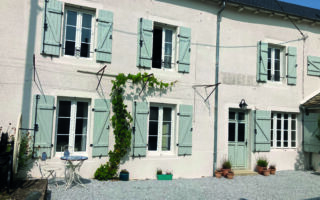The Foodie Guide to France’s Christmas Specialities
Feature
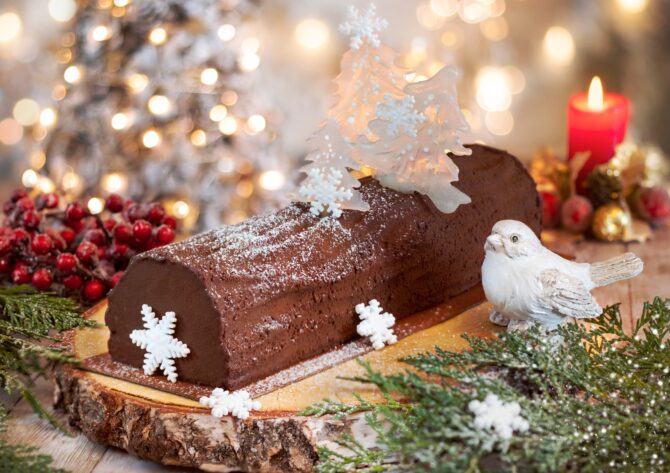
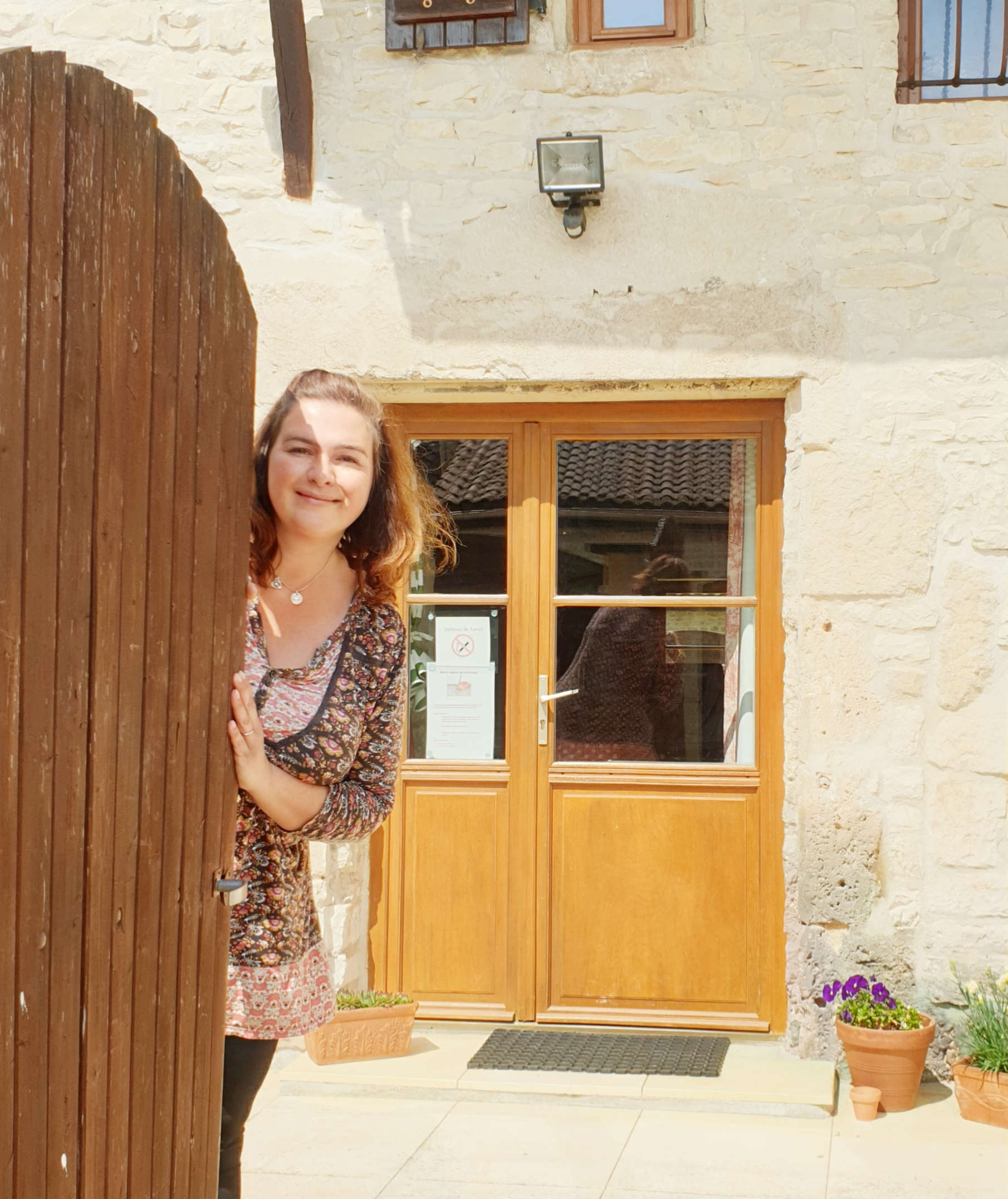
Being globally renowned for its cuisine, France, as you would expect, pushes the boat out when it comes to Christmas food specialities. As always, the emphasis is on quality produce and provenance.
When we first moved to the beautiful Charente, it was late December, and I was stunned by the civility of our local supermarkets and markets. Absolutely zero sense of panic buying, no queues to speak of and aside from a few aisles of expensively-priced chocolates, no culture of ‘pile it high, it’s Christmas’. Just your average day at the office. We bought a ‘chapon’ which is very popular in France at Christmas (which I had no idea was a castrated cockerel!) as I could not see a turkey, and we had bought a Christmas pudding with us from the UK. Little did I know of the delights of a French Christmas back then!
Now, with a few more French Christmases under my belt, I understand the joys of French festive foods and drinks – here are some of my favourite specialties to look out for over the holiday season.

Champagne
Often served as an aperitif to begin the festivities. The French really splurge on fine food and drink at Christmas. If your pocket doesn’t stretch to Luis Roederer Cristal, Tatinger, Bollinger, and the like, try a local producer instead. Here in Mons, we have the Aubinaud family, who make an absolutely stunning vin mousseaux using the traditional Champagne method. It’s not allowed to be called Champagne, but it’s an absolute treat nonetheless. We drink it every Christmas.
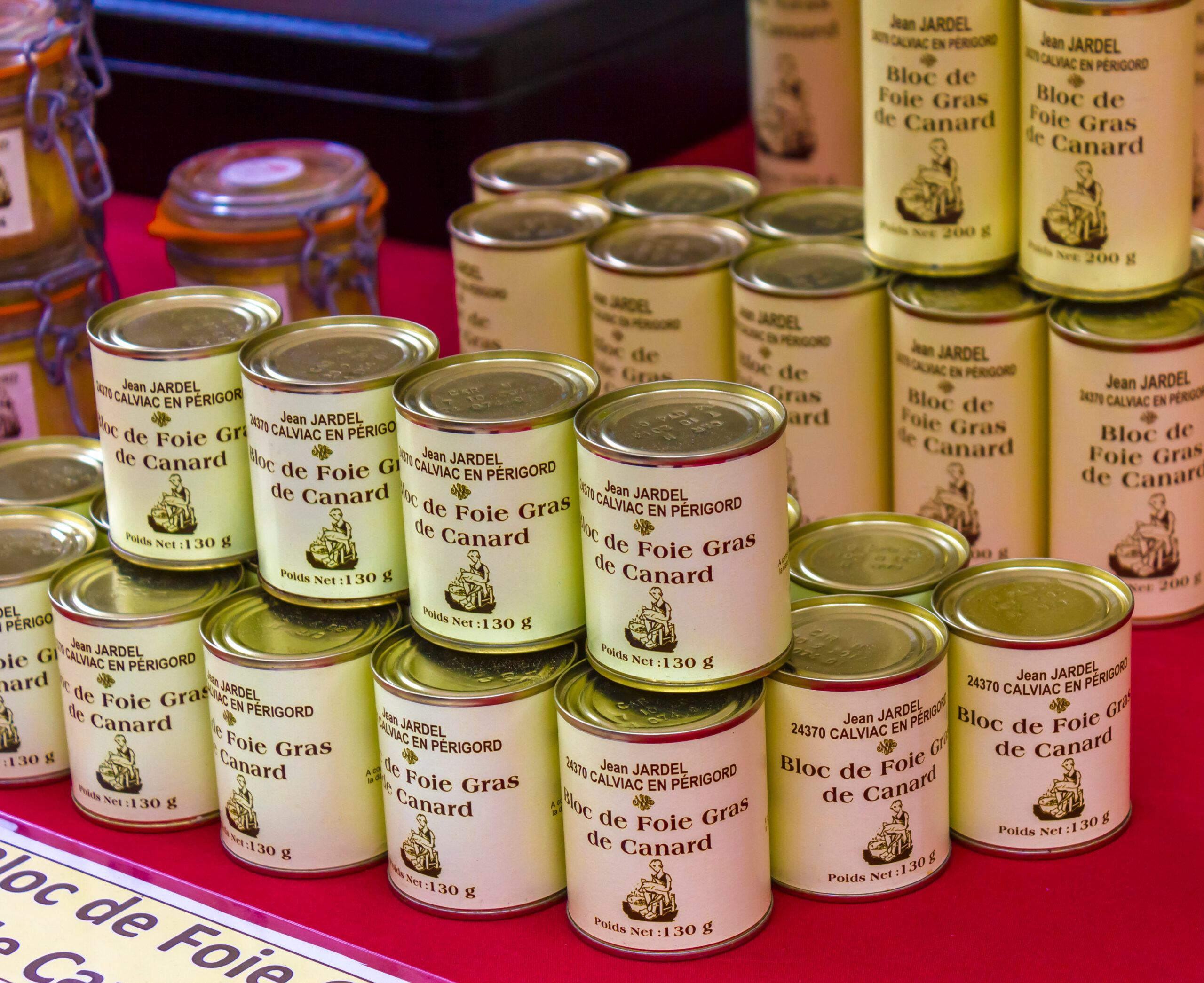
Fois gras and pain d’epices
In the UK, fois gras was never on my radar. I suppose it was something very much “off-limits” and I certainly would not order it on a menu out of principle. Well, that was before we were invited to dine one evening with our lovely French neighbours that first Christmas. Our English reputation preceded us, and she had checked that the children would like chicken and chips!
Sitting at her table, with a plethora of aperitifs before us, her husband had obviously asked for the fois gras. There was a discussion, and then we were asked if we had ever tasted fois gras. My stomach sank as we would never want to offend on our first meeting…
Out came this enormous lump of what looked like a smooth pâté with a knife stabbed in the centre. I was presented with a morceau on a crispy toast, and the rest, as they say, is history.
Foie gras literally means ‘fatty liver’ and can be taken from the duck or the goose. A speciality from the southwest of France, our local producer in the characterful village of Tusson has an outstanding reputation and works with suppliers committed to animal welfare practices.
Fois gras is often eaten with pain d’epices, which is a gingerbread-like cake. Our children love pain d’epices served with custard (oh so British!), but it is traditional here at Christmas to pair it with fois gras.
Snails
Escargots, or “cagouilles” here in the Charente, are incredibly popular at Christmas when approximately two-thirds of the annual sales across France are made.
Here in Mons, we are lucky to have one of the last remaining artisans in this area La Cagouille Charentaise, who supply all over France. Christmas specialities are puff pastry-encased, garlic-and-herb snails, snail-and-pork sausages, and Cagouilles à la Charentaise, which is snails with bolognese sauce – it’s seriously delicious (if I don’t think about the snails!!!).
Caviar
The epitome of luxury, and whilst the best comes from Russia, it is incredibly popular in France at Christmas time. Hand-harvested, rare and expensive, these salty little explosions of sturgeon fish eggs in your mouth are a savoury delight.
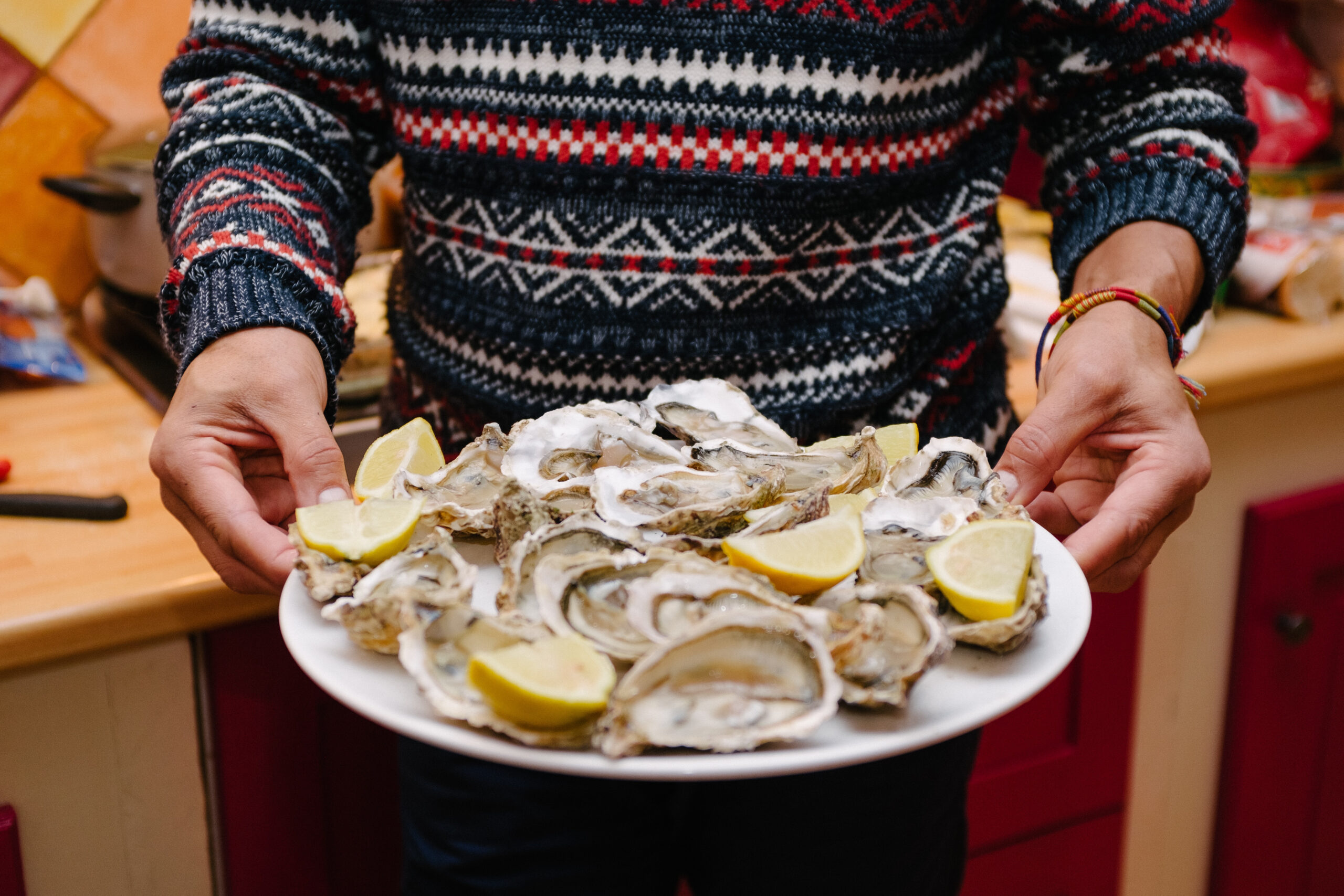
Oysters
Living in the UK, I was never sold on oysters. How times change! With the world-renowned produce here on the southwest coast at Marennes-Oleron, which accounts for half of the oyster production in France, my opinion changed.
One summer, we were lucky enough to be invited to our friend’s coastal holiday home. Lunch was in their back garden with long wooden trestle tables and about thirty family members. Her Dad brought huge polystyrene boxes back from the local market, and her Mum opened them to reveal oysters, langoustines, and mussels. Offering me an oyster, I thought, “Why not?” I proceeded to throw it down my throat, much to her horror – “NON! Qu’est ce que tu fais? Croque, CROQUE!!!”
Now, in the UK, I had learnt to swallow your oysters whole, ‘down-the-hatch’ style. Apparently, according to my friend’s Mum (with whom I would never argue), this is absolutely wrong and you need to pop it in your mouth with your teeth to kill it (so it doesn’t attach anywhere you don’t want it to!!!) and to release the flavour.
Here, oysters are a staple at any family celebration and especially prominent at Christmas. There are four types of oyster found in Marennes-Oleron: fines de claire, speciale claire, fine de claire verte and the pousse en claire. If you want an extra-special oyster, buy either the claire verte or the pousse en claire, as these are certified with the prestigious Red Label. These are generally more plump and have a slightly stronger flavour.
Chapon de Noel and other birds
A chapon is very popular here at Christmas. It is a castrated cockerel and is a very juicy, good all-rounder. The main Christmas meal, which, incidentally, is eaten the night before here in France and called Le Réveillon de Noël, has many courses. The main course could be a turkey (dinde), a goose (oie) or other meat, often be ordered in advance from the local butcher’s. One of the best in our area is Maison Tiphonnet in Rouillac.
The bird may well be served with a gratin dauphinoise and green beans, but you will only find cranberry sauce in the English aisles of the supermarket at an extortionate price.
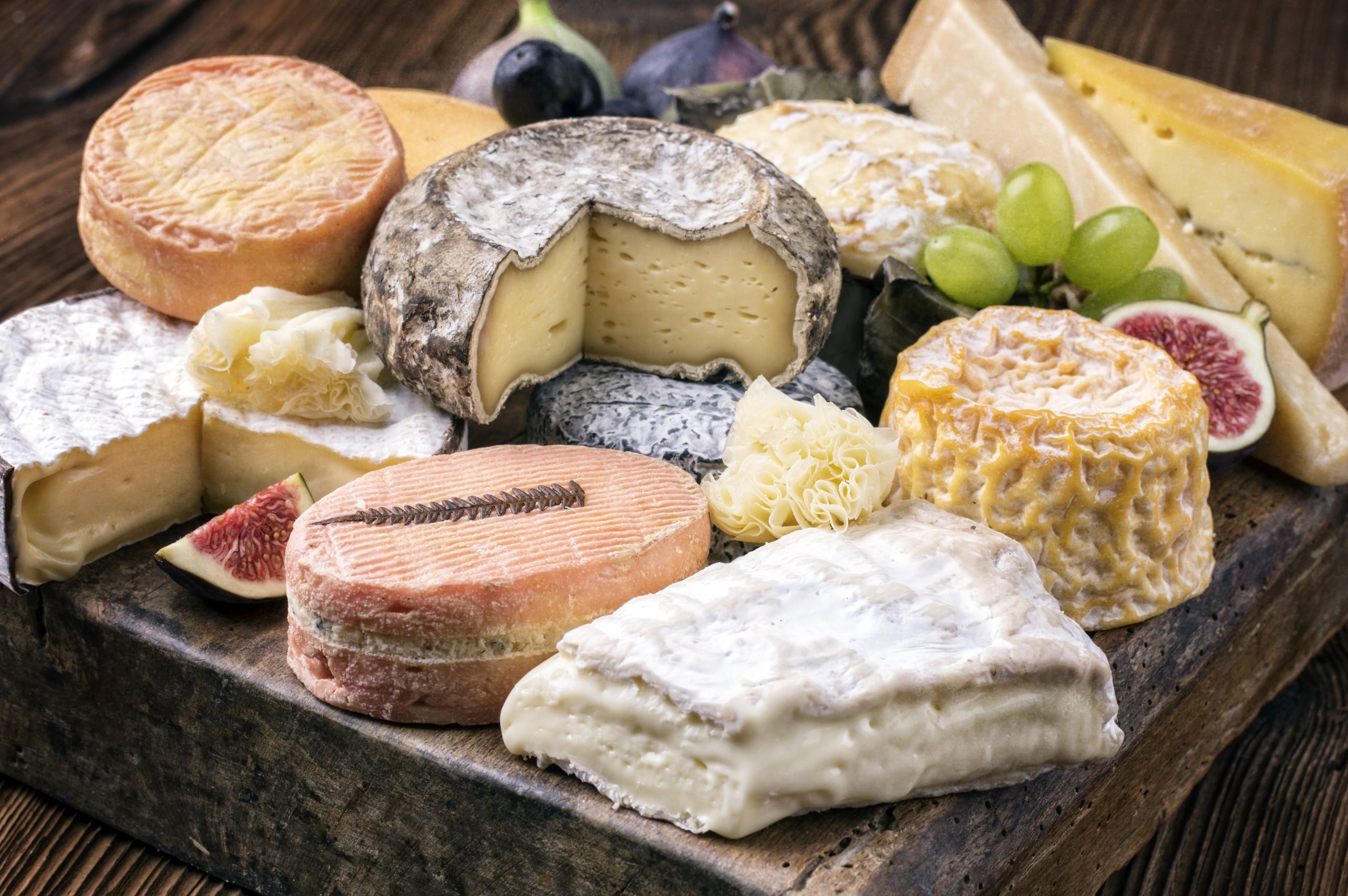
Cheese
Cheese is always served prior to the dessert in France and a French cheese board will be a mix of flavours and textures. At Christmas, a cheese with truffle, such as a Brie or a hard cheese like Comte, is just that bit more indulgent. Here, in the Charente, we have goat’s cheese specialities, and SCEA du Bardonneau is one such amazing producer in Val d’Auge alongside the Bulle de Chevre, also in Val d’Auge.
Cheeses may be served simply with crusty bread, pain d’epices or salad leaves with a simple vinaigrette dressing.
Read our Insider’s Guide to French Cheese.
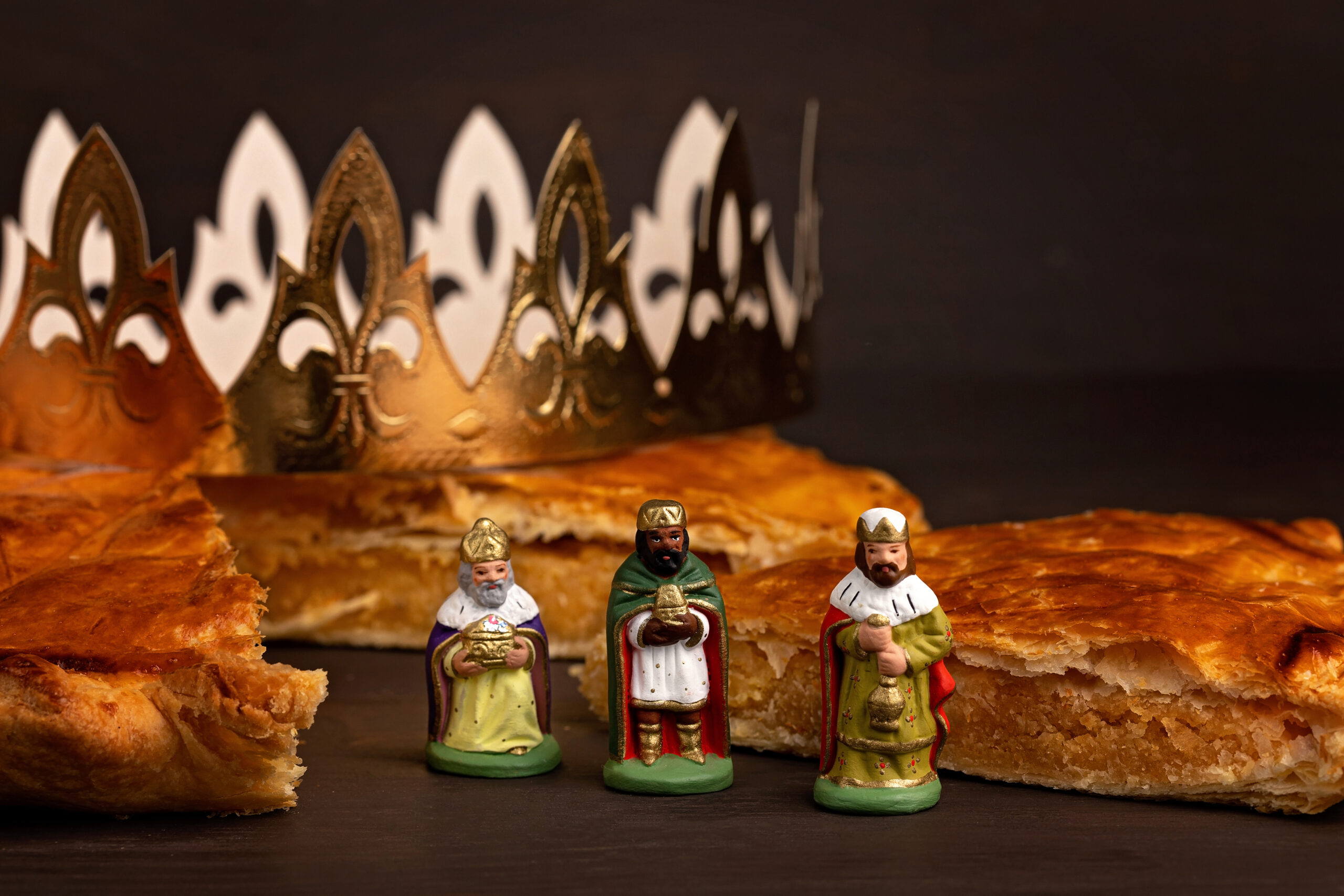
Desserts
A traditional firm favourite is a Yule log or a Bûche de Noël. Many families buy one from a local boulanger as a real decadent, handmade treat.
Our family has adopted a tradition of making our own every year since we arrived in France, with the children loving to push in the plastic ornaments and shake the ‘snow’ all over the log before serving.
Galette des Rois or a Brioche des Rois is a cake traditionally for Epiphany, but these cakes are sold in shops and boulangerie in the run-up to Christmas, too. A brioche version of the King’s Cake is more associated with the South of France. It is a circular wreath of brioche adorned with jewels of dried fruits. The galette is made of puff pastry typically with a frangipane (almond paste) filling, and each has a little porcelain fève or collectable figurine inside. Whoever finds the fève will wear the crown and have good fortune for the coming year!
Cognac
The perfect indulgent end to a special meal, and being in the heart of Cognac country, we are spoilt for choice! Our local town of Aigre is home to one of the oldest Cognac Maisons in France, Gautier Cognac. Have you heard of a ‘Brulot Charentais’ or a ‘Flamme des Anges’? It’s a full-strength cognac added to the top of your coffee and set alight! There are even special mugs for this.
Whatever you serve this Christmas, enjoy your time with family and friends. This year will be the first year that our family parts with UK tradition and we go all-out for a French Christmas. (Although I’m still not foregoing Jamie’s shredded sprouts with chorizo and chestnuts!)
Joyeux Noel!
Share to: Facebook Twitter LinkedIn Email
By Carol Paylor
Leave a reply
Your email address will not be published. Required fields are marked *


